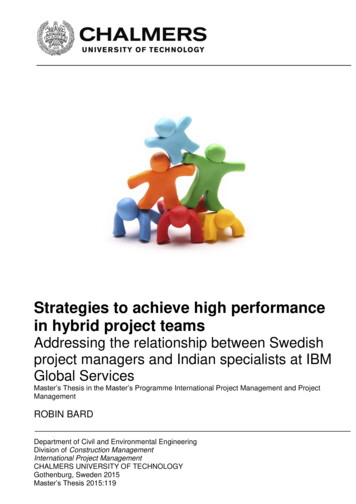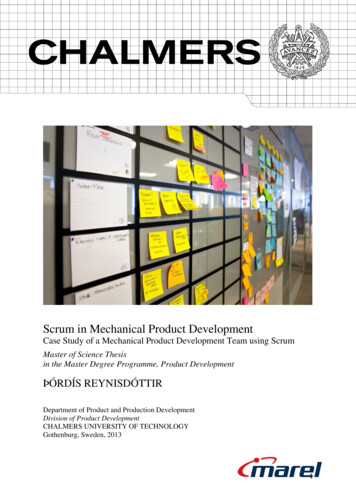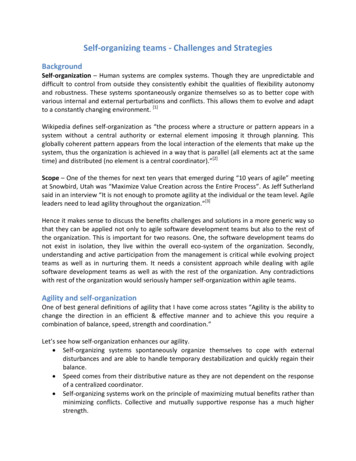
Transcription
Self-organizing teams - Challenges and StrategiesBackgroundSelf-organization – Human systems are complex systems. Though they are unpredictable anddifficult to control from outside they consistently exhibit the qualities of flexibility autonomyand robustness. These systems spontaneously organize themselves so as to better cope withvarious internal and external perturbations and conflicts. This allows them to evolve and adaptto a constantly changing environment. [1]Wikipedia defines self-organization as “the process where a structure or pattern appears in asystem without a central authority or external element imposing it through planning. Thisglobally coherent pattern appears from the local interaction of the elements that make up thesystem, thus the organization is achieved in a way that is parallel (all elements act at the sametime) and distributed (no element is a central coordinator).”[2]Scope – One of the themes for next ten years that emerged during “10 years of agile” meetingat Snowbird, Utah was “Maximize Value Creation across the Entire Process”. As Jeff Sutherlandsaid in an interview “It is not enough to promote agility at the individual or the team level. Agileleaders need to lead agility throughout the organization.”[3]Hence it makes sense to discuss the benefits challenges and solutions in a more generic way sothat they can be applied not only to agile software development teams but also to the rest ofthe organization. This is important for two reasons. One, the software development teams donot exist in isolation, they live within the overall eco-system of the organization. Secondly,understanding and active participation from the management is critical while evolving projectteams as well as in nurturing them. It needs a consistent approach while dealing with agilesoftware development teams as well as with the rest of the organization. Any contradictionswith rest of the organization would seriously hamper self-organization within agile teams.Agility and self-organizationOne of best general definitions of agility that I have come across states “Agility is the ability tochange the direction in an efficient & effective manner and to achieve this you require acombination of balance, speed, strength and coordination.”Let’s see how self-organization enhances our agility. Self-organizing systems spontaneously organize themselves to cope with externaldisturbances and are able to handle temporary destabilization and quickly regain theirbalance. Speed comes from their distributive nature as they are not dependent on the responseof a centralized coordinator. Self-organizing systems work on the principle of maximizing mutual benefits rather thanminimizing conflicts. Collective and mutually supportive response has a much higherstrength.
Lastly, multiple elements actively participating with autonomy provide enhancedcoordination.All these factors help the self-organizing system to be flexible while retaining its robustness.Thus we can say that agility and self-organization go hand-in-hand. If we want the whole valuechain to become agile, self-organizing teams is an essential component of the overall solution.The challengeAdopting agile mindset and practices across the whole organization is a big challenge. It is easier saidthan done. It needs good grasp of issues involved, especially by the leaders at different levels.Though not the only one, self-organization is an essential element of agility. However it goes against theestablished ways of managing the organization. To be successful it requires patience & perseverance. Itis a prolonged and massive effort of understanding the current structures and why they are becoming abottleneck as well as the changes required to transform the teams to be self-organizing.Benefits of self-organizing teamsThese are certain benefits which can be available to any team in a business organization, if itfunctions as self-organizing team. Faster actions and decisions – However capable and experienced the team leader, soonhe becomes a bottleneck in speedy decisions & actions. This is especially true where theteam members themselves are expected to take on the spot actions or decisions sincethey are best aware of the current situation. Individual and team development – Self-organization takes away the protectiveumbrella provided by the team leader and forces the individuals and the team to takegreater responsibility and ownership of their work. In such an environment, teammembers understand which skills & knowledge they need to acquire and go about ontheir own doing so. They also benefit from the support provided by their peers. I haveseen both the members as well as the teams rapidly mature by facing the challenges,sort of baptism by fire. Redistribution of work between leader and the team – In a command & controlculture, a typical team leader spends most of his time planning & tracking the work ofhis sub-ordinates. As a result, he is left with very little time & attention to devote to thelong term needs of the team and its members. As the team becomes more & more selforganized, plenty of planning & tracking tasks are taken up by the team. As a result, theteam leader now has lot more time on his hand to engage in activities which do justiceto his experience exposure and maturity. Use of full human potential – People have lot of potential of which only a fractionnormally gets used in a command and control culture. When a team is self-organized,there are lot more opportunities to explore hidden or unused talents of its members.Bottlenecks in self-organizationThe underlying driving force behind these benefits is “Synergy”, which I view as an abbreviationof “System Energy” [4]. Each system has an abundant supply of energy. It is the various
bottlenecks which restrict it’s free flow where we need it. Self-organization removes many ofthese bottlenecks as we shall discuss in solutions.The structures which act as impediments or bottlenecks to free flow of system energy becomechallenges for self-organization. These broadly fall in two categories.Bottlenecks in adoption – When the team members come to agile from traditional command &control environment, there is a lot of unlearning to be done. Some of these are personalitytraits like, Inertia – Find comfort in old habits, resistance to try new ways of working Ego – Perceived superiority over other junior or less experienced members Diffidence – Lack of self-confidence leading to hesitation to mix & share Individual credit – When team members seek individual credit for successes, It breaksdown free sharing of information and local interactionsThe way teams are organized lead to some challenges like, Distance – when a team is made up people who are at different locations Time – When team members are from different time zones, sometimes on oppositesides of the globeBoth these increase risk of “Out of sight, out of mind”, and seriously hamper communicationand team bonding.Bottlenecks in transformation –These structures can be at individual or team level, like Habits – Habits get into our system clock and are very tough to resist Assumptions – For example about cause & effect or what works for us and what doesnot. These are easiest to change since no emotions are involved Beliefs – We are emotionally attached to our beliefs and they affect our decisions &actions. Values – Represent what we identify with, what we consider right or wrong and aretoughest to change.Whatever we observe or experience, gets filtered through them before it reaches us.The structures could also be external to the teams like, Hierarchical – In business organizations, reporting relationships have a major impact onthe individual motivation and priorities. Complex hierarchical structures also tend toencourage silos and seriously hamper smooth flow of communication. Procedural – These include all the policies and processes laid down by the managementand they are expected to be followed by all the members of the organization Cultural – These take the form of traditions and conventions which take shape over aperiod of time. Though mostly unwritten, they have a strong influence on the behaviorand individual preferencesSolution
As with the challenges, we will look at generic solutions which can be used by the managementof any business organization to evolve and nurture a self-organizing team. We will also look atspecific situations which may be applicable only to the self-organizing agile teams involved insoftware development.Freedom and structuresIn a business organization structures appear as policies & processes, even cultural aspects liketraditions & conventions. They shape the behavior of members by encouraging certain actions /decisions while discouraging / restricting other actions or decisions. While the structures canbecome bottlenecks they can also be modified to act as facilitators.When people talk of freedom, they are mainly talking about freedom OF choice. There are alsosituations where they don’t want to be overburdened with options and look for freedom FROMhaving to make a choice; in such situations they welcome the structures. Well thought out andexecuted structures are great levelers and ensure a fair treatment to the majority. They give usoptimum freedom so that we can operate comfortably within our ability to make the rightchoices.Progressive need for freedomWhen people are trying to understand and master a new way of working, in this case being selforganized, the Japanese concept of “ShuHaRi” can be quite useful. In simple terms it considersthe three stages of this process. ShuHaRi roughly translates to "first learn, then detach, andfinally transcend."Martin Fowler has explained it well as[5],Shu: In the beginning stage the student follows the teachings of one master precisely. Heconcentrates on how to do the task, without worrying too much about the underlying theory. Ifthere are multiple variations on how to do the task, he concentrates on just the one way hismaster teaches him.Ha: At this point the student begins to branch out. With the basic practices working he nowstarts to learn the underlying principles and theory behind the technique. He also startslearning from other masters and integrates that learning into his practice.Ri: Now the student isn't learning from other people, but from his own practice. He creates hisown approaches and adapts what he's learned to his own particular circumstances.Implementation strategyNow let’s now see how the leadership (Management team leader) can work in unison wherethe management brings about required structural changes in the organization which the teamleader uses to shape the transformation from a controlled to self-organized way of working.Though specific examples will be used during the session to drive home the proposed solutionthe underlying approach will be,To begin with, the team leader will make certain practices and events mandatory to let theteam members get comfortable with self-organization without worrying too much about the
underlying theory. They are given only one way of doing things and when practiced oftenenough, they become a habit. Once the team members experience the benefits first-hand, theywant to keep following the good practices.Once a member is past that stage, he is ready to understand not just “how” but also the “why”part. He starts sharing with others within as well as outside his team what works for him andwhat does not. He reads as well as discusses about different techniques or strategies and startsabsorbing the learning in his practice.When majority of the team has reached that stage, it does not any more need to depend onoutside help. The members come up with their own strategies to deal with their specificsituations as applicable to their own context. This becomes a voluntary activity. As more andmore teams are transformed in this manner, the organization as a whole gets transformed. Inshort, the whole value chain gets transformed.TakeawayUse control to influence; use influence to empowerConclusionTo experience a major impact on the business organizations, we need agility not just at theindividual or team level, but across the entire organization. To this end, helping teams becomeself-organizing is a crucial step. However, self-organization can’t be imposed. We can only helpit evolve and later nurture to bring about the transformation.There are many benefits of self-organization but there are also challenges. Leadership at theteam level as well as at the organization level needs to understand those challenges and mustwork in unison to bring about the required changes and sustain them.One of the important characteristics of a self-organizing team is need for greater freedom.However, freedom is often misunderstood to mean more and more options. Contrary to thecommon belief, a person or a team is comfortable with only as much freedom as they have theability to cope with successfully. Beyond that point, freedom of choice becomes an overheadand they look for freedom FROM choices. Understanding the existing structures and suitablymodifying / tweaking them to provide the optimum balance.For the team and its members, the kind of freedom needed is not static; it evolves as theybecome more and more self-organized.SummaryAgility will make a major impact on business organizations when it spreads to the wholeorganization; not just software development. For this, evolving & nurturing self-organization isa crucial step.
Though there are many benefits of self-organization, there are also unique challenges. Leadersneed to understand them before applying right solutions at the right time.This session is for you, if you are leading a team or an organization. You will learn the way to getmaximum benefits of self-organization, supported with practical examples.References[1] Complexity and Self-organization f[2] Self-organization http://en.wikipedia.org/wiki/Self-organization[3] Jeff Sutherland: Are Agile Teams Truly Agile? le-teams[4] Prabhakar Karve blog defined-anddemystified[5] ShuHaRi http://martinfowler.com/bliki/ShuHaRi.html
Now let’s now see how the leadership (Management team leader) can work in unison where the management brings about required structural changes in the organization which the team leader uses to shape the transformation from a controlled to self-organized way of working.
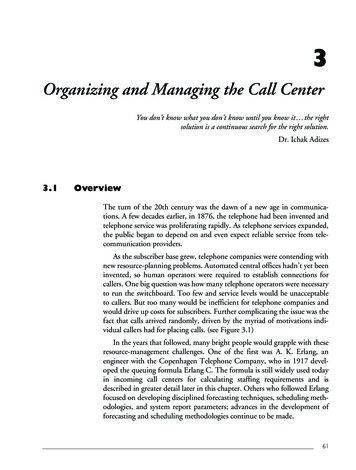
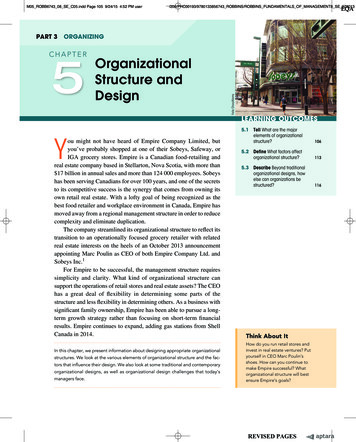
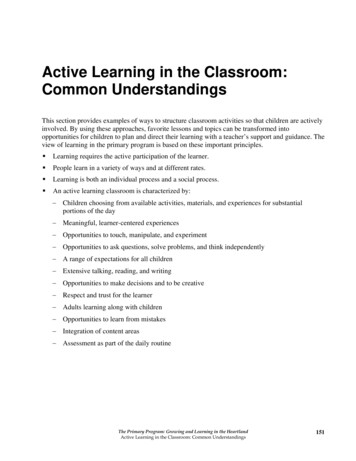
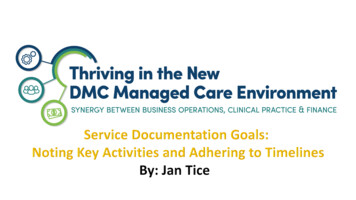


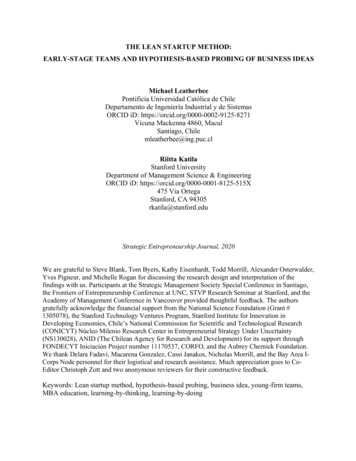

![Upskilling and Structuring [Teams] for Predictive Analytics](/img/11/pd-2018-insurtech-session-6.jpg)
